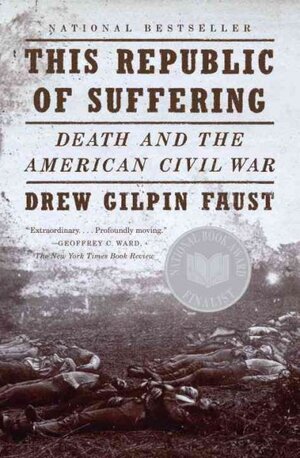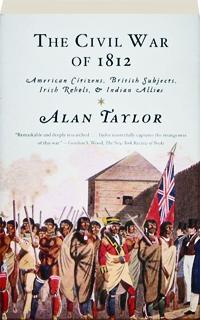In the last discussion meeting of the history book club, members expressed interest in reading a book on the Treaty of Versailles that ended World War I and created the conditions that led to World War II. Here are some alternatives:
Prize Winning Histories
The Long Shadow: The Legacies of the Great War in the Twentieth Century by David Reynolds (4.7 stars, 430 pages of text, 2014) The book is not yet out in paperback, hardback $24.25. Here is the review of the book in The Guardian.
A Shattered Peace: Versailles 1919 and the Price We Pay Today by David A. Andelman (4.1 stars, 336 pages, 2007) This is not available in paperback, hardback is $24.50. Here is the short review from Foreign Affairs.
To End All Wars: Woodrow Wilson and the Quest for a New World Order by Thomas J. Knock (4.3 stars, 400 pages, 1995, $32.53) Here is the Kirkus review.
A Peace to End All Peace: The Fall of the Ottoman Empire and the Creation of the Modern Middle East by David Fromkin (4.5 stars, 568 pages of text, 2001) This seems to be out of print, but available online used. Here is the New York Times Review.
Histories for Which I Did Not Find Published Reviews
The Illusion of Peace: International Relations in Europe, 1918-1933 by Sally Marks; second edition (4.2 stars with relatively few ratings, 272 pages, 2003, $33.65)
A more general book that includes a number of relevant chapters to diplomacy at the end of World War I.
Diplomacy by Henry Kissinger (4.5 stars, 836 pages of text, 1995, $14.55) Here is the New York Times review, which Mr. Kissinger did not like.
Prize Winning Histories
The Long Shadow: The Legacies of the Great War in the Twentieth Century by David Reynolds (4.7 stars, 430 pages of text, 2014) The book is not yet out in paperback, hardback $24.25. Here is the review of the book in The Guardian.
One of the most violent conflicts in the history of civilization, World War I has been strangely forgotten in American culture. It has become a ghostly war fought in a haze of memory, often seen merely as a distant preamble to World War II. In The Long Shadow critically acclaimed historian David Reynolds seeks to broaden our vision by assessing the impact of the Great War across the twentieth century. He shows how events in that turbulent century—particularly World War II, the Cold War, and the collapse of Communism—shaped and reshaped attitudes to 1914–18.Paris 1919: Six Months That Changed the World by Margaret MacMillan (4.3 stars, 494 pages of text, 2003, $11.00) Here is the Washington Post review.
By exploring big themes such as democracy and empire, nationalism and capitalism, as well as art and poetry, The Long Shadow is stunningly broad in its historical perspective. Reynolds throws light on the vast expanse of the last century and explains why 1914–18 is a conflict that America is still struggling to comprehend. Forging connections between people, places, and ideas, The Long Shadow ventures across the traditional subcultures of historical scholarship to offer a rich and layered examination not only of politics, diplomacy, and security but also of economics, art, and literature. The result is a magisterial reinterpretation of the place of the Great War in modern history.
For six months in 1919, after the end of “the war to end all wars,” the Big Three—President Woodrow Wilson, British prime minister David Lloyd George, and French premier Georges Clemenceau—met in Paris to shape a lasting peace. In this landmark work of narrative history, Margaret MacMillan gives a dramatic and intimate view of those fateful days, which saw new political entities—Iraq, Yugoslavia, and Palestine, among them—born out of the ruins of bankrupt empires, and the borders of the modern world redrawn.Other Histories
A Shattered Peace: Versailles 1919 and the Price We Pay Today by David A. Andelman (4.1 stars, 336 pages, 2007) This is not available in paperback, hardback is $24.50. Here is the short review from Foreign Affairs.
"The failed peace settlement following the Great War of 1914-1918 has been the subject of many fine books. In many respects, David Andelman's A Shattered Peace is the best of these. It is compact and compellingly written. Moreover, it explains more clearly than any other work how the failure of peacemaking in 1919 shaped later history and, indeed, shapes our own era."
--Ernest R. May, Charles Warren Professor of American History, Harvard University
"The peace settlements that followed World War I have recently come back into focus as one of the dominant factors shaping the modern world. The Balkans, the Middle East, Iraq, Turkey, and parts of Africa all owe their present-day problems, in part, to these negotiations. David Andelman brings it all back to life--the lofty ideals, the ugly compromises, the larger-than-life personalities who came to Paris in 1919. And he links that far-away diplomatic dance to present-day problems to illuminate our troubled times. A tremendous addition to this vitally important subject."
--Ambassador Richard Holbrooke
To End All Wars: Woodrow Wilson and the Quest for a New World Order by Thomas J. Knock (4.3 stars, 400 pages, 1995, $32.53) Here is the Kirkus review.
In his widely acclaimed To End All Wars, Thomas Knock provides an intriguing, often provocative narrative of Woodrow Wilson's epic quest for a new world order. The account follows Wilson's thought and diplomacy from his policy toward revolutionary Mexico, through his dramatic call for "Peace without Victory" in World War I, to the Senate's rejection of the League of Nations. Throughout Knock explores the place of internationalism in American politics, sweeping away the old view that isolationism was the cause of Wilson's failure and revealing the role of competing visions of internationalism--conservative and progressive.
A Peace to End All Peace: The Fall of the Ottoman Empire and the Creation of the Modern Middle East by David Fromkin (4.5 stars, 568 pages of text, 2001) This seems to be out of print, but available online used. Here is the New York Times Review.
The critically acclaimed New York Times bestselling account of how the modern Middle East came into being after World War I, and why it is in upheaval todayReparation in World Politics: France and European Economic Diplomacy, 1916-1923 by Marc Trachtenberg (only one rating, 423 pages, 1980, apparently out of print but available online used) Read a very short review in Foreign Affairs.
In our time the Middle East has proven a battleground of rival religions, ideologies, nationalisms, and dynasties. All of these conflicts, including the hostilities between Arabs and Israelis that have flared yet again, come down, in a sense, to the extent to which the Middle East will continue to live with its political inheritance: the arrangements, unities, and divisions imposed upon the region by the Allies after the First World War.
In A Peace to End All Peace, David Fromkin reveals how and why the Allies came to remake the geography and politics of the Middle East, drawing lines on an empty map that eventually became the new countries of Iraq, Israel, Jordan, and Lebanon. Focusing on the formative years of 1914 to 1922, when all-even an alliance between Arab nationalism and Zionism-seemed possible he raises questions about what might have been done differently, and answers questions about why things were done as they were. The current battle for a Palestinian homeland has its roots in these events of 85 years ago.
Histories for Which I Did Not Find Published Reviews
The Illusion of Peace: International Relations in Europe, 1918-1933 by Sally Marks; second edition (4.2 stars with relatively few ratings, 272 pages, 2003, $33.65)
Sally Marks' compelling analysis of European diplomacy between World War I and Hitler's advent, explores the reasons why a lasting peace failed to occur in the interwar era. Building on the theories of the first edition, Marks argues that the Allied failure to bring defeat home to the German people, and the consequences of this oversight, were partly to blame, and reassesses Europe's leaders and the policies of the powers. Thoroughly revised and updated in the light of recent scholarly and documentary research, the second edition of this highly successful text also includes new material, maps, and an extended bibliography.The Versailles Settlement: Peacemaking After the First World War, 1919-1923 by Alan Sharp (3 stars with relatively few ratings, 288 pages, 2008, $42.00) I could not find a published review.
This text has established itself as one of the most highly regarded studies on the subject. Revised and expanded, this second edition incorporates the latest research and includes more discussion of the roles of the League of Nations after the conference, and of the post-war conflicts between Poland and the USSR, and between the USSR and Turkey.
A more general book that includes a number of relevant chapters to diplomacy at the end of World War I.
Diplomacy by Henry Kissinger (4.5 stars, 836 pages of text, 1995, $14.55) Here is the New York Times review, which Mr. Kissinger did not like.
A brilliant, sweeping history of diplomacy that includes personal stories from the noted former Secretary of State, including his stunning reopening of relations with China.Note: Prices given are taken from Amazon.com and are for comparison only.
The seminal work on foreign policy and the art of diplomacy.
Moving from a sweeping overview of history to blow-by-blow accounts of his negotiations with world leaders, Henry Kissinger describes how the art of diplomacy has created the world in which we live, and how America’s approach to foreign affairs has always differed vastly from that of other nations.
Brilliant, controversial, and profoundly incisive, Diplomacy stands as the culmination of a lifetime of diplomatic service and scholarship. It is vital reading for anyone concerned with the forces that have shaped our world today and will impact upon it tomorrow.










